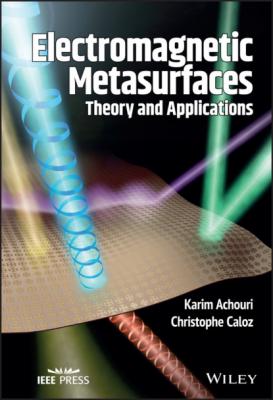upper H dot StartFraction partial-differential Over partial-differential t EndFraction bold-script upper M minus bold-script upper M dot StartFraction partial-differential Over partial-differential t EndFraction bold-script upper H right-parenthesis period EndLayout"/>
It is generally more convenient to consider the time-average version of (2.65), which reads
(2.67)
where denotes the time-average operation. In the case of time-harmonic fields, this equation can be further manipulated as follows. First, it is straightforward to show that and . Second, the terms and may be expressed in terms of the electric and magnetic susceptibility tensors by using and , where the electric and magnetic conductivity tensors are related to the susceptibility tensors as
(2.68a)
(2.68b)
which leads, after replacing the instantaneous field vectors by their phaser counterparts, to
(2.69a)
(2.69b)
Third, we write the terms and in (2.67) in the frequency domain, which transforms the time-derivatives in 2.66d and 2.66e according to , so that
(2.70a)
(2.70b)
Substituting and in (2.70) by their constitutive definitions in (2.54) transforms (2.70) into
(2.71a)
(2.71b)
